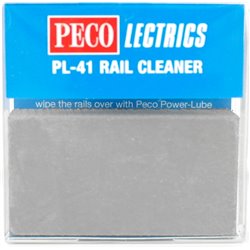There is no definitive 'best' model railway track in OO gauge, as different modellers may have different preferences...
No products
Product successfully added to your shopping cart
There are 0 items in your cart. There is 1 item in your cart.
Search Tips
Christmas and New Year
We are dispatching orders every weekday apart from Christmas Day, Boxing Day and New Year's Day.
If you order is time critical, select next day delivery at checkout.
The shop in Sandown is closed from 25th December, reopening on 30th December.
What was Wrenn?
G & R Wrenn Limited was established in 1950 by brothers George and Richard Wrenn, with their third brother Cedric joining later in the decade. The company became renowned for manufacturing high-quality track work and points for ‘OO’ Gauge model railways. Initially operating from Lee Green, London, the business moved to larger premises in Basildon in 1955 due to rapid expansion. The company became a limited entity in 1957, with George and Richard Wrenn as joint chairmen. They significantly grew their product line, including the introduction of the ‘152’ Series Racing Car system in 1960, which competed with Scalextric.
In 1964, G & R Wrenn Limited collaborated with British Trix Ltd., enabling the latter to sell Wrenn products on the home market. This partnership saw the issuance of debentures to raise capital, leading to British Trix Ltd. placing one of its directors on the Wrenn board. By 1966, Lines Bros. Group acquired a majority stake in G & R Wrenn, integrating it into their expansive toy manufacturing network. This acquisition facilitated the use of Hornby Dublo moulds and tools by Wrenn, leading to the production of Wrenn-branded locomotives and other railway items.
Wrenn’s connection with Tri-ang became evident when new products were marketed under the "Tri-ang WRENN" brand from 1969 to 1972. This period also saw Wrenn absorbing and selling remaining stocks of Hornby Dublo items. However, by 1972, G & R Wrenn regained its independence from the Lines Bros. Group. This new era was marked by the introduction of distinctive branding and a significant expansion of their product catalogue, which included over 70 new wagon identities by 1980.
The company continued to thrive until 1992 when trading ceased, leading to the sale of its name and assets to David Boyle of Dapol Model Railways. During the Dapol years, Wrenn products were marketed until 1994, with the majority of production eventually moved to a new site in Llangollen. Despite a major fire in Winsford, much of the Wrenn history and stock survived. Dapol made some efforts to reintroduce Wrenn items, though actual production of locomotives never resumed.
In 2001, G & R Wrenn was acquired by three Wrenn enthusiasts who aimed to preserve the company’s legacy rather than restart full-scale production. They produced limited edition items and established the Official Wrenn Collectors Club. A comprehensive book detailing the history and products of G & R Wrenn was published in 2004, celebrating the company’s impact on model railway enthusiasts and collectors. The company ceased trading in 2015.
Click here to receive the tips weekly in your mailbox. You can unsubscribe at any time.








